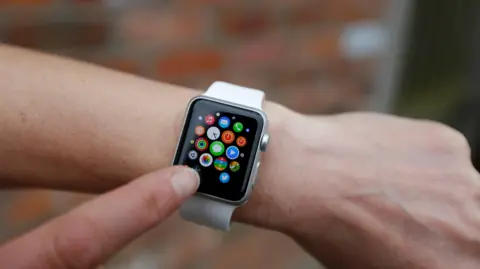### Global Decline in Smartwatch Sales: A Turning Point for the Industry
For the first time in history, global smartwatch sales have recorded a decline, signaling a significant shift in consumer preferences and market dynamics. Recent statistics from a prominent market research firm, Counterpoint, reveal that the shipments of smartwatches plummeted by 7% in 2024 compared to the previous year. This decline can largely be attributed to the market leader, Apple, which has been experiencing an alarming 19% drop in its smartwatch sales.
Various factors have contributed to this downturn in popularity for Apple’s smart devices. Analysts at Counterpoint suggest that one primary reason behind the decline is the plateauing of innovative features in Apple’s latest smartwatch offerings. Notably, the anticipated Ultra 3 model, which could have captivated consumers and revitalized interest, never saw the light of day, thereby leading to a stagnation in sales. Anshika Jain, a senior research analyst at Counterpoint, indicated that specific trends in the North American market were crucial in worsening Apple’s sales outlook. Jain stated, “The lack of the Ultra 3 and minimal feature upgrades in the S10 lineup led consumers to delay purchases.”
Furthermore, the decline in Apple’s sales can also be attributed to legal challenges it faced, particularly regarding patent disputes related to its blood oxygen monitoring features. The subsequent sales and import bans imposed by US authorities in late 2023 and early 2024 exacerbated the situation, contributing to the soft financial performance in the first half of 2024. With Apple’s market share declining from 25% to 22% within the last three months of 2024, the company is facing unprecedented challenges in maintaining its premium position in the smartwatch industry.
Despite this overall decline in sales, the market did see a significant uptick in demand for budget-friendly smartwatches produced by Chinese companies like Xiaomi, Huawei, and Imoo. Sales for these brands surged, illustrating a growing consumer inclination toward affordable technology. In particular, Chinese smartwatch sales constituted 25% of the market, representing a notable increase from 19% the previous year. As stated by Ms. Jain, “Huawei, Imoo, and Xiaomi were the front runners in the China market,” signaling the rise of these brands against a backdrop of declining sales from established players.
The preference for smartwatches designed for children has emerged as a notable growth segment in 2024, marking a divergence in consumer interests. Brands like Imoo, known as “Little Genius” in China, witnessed a 22% increase in shipments, while Xiaomi’s shipments grew by an astounding 135%. As parents prioritize safety and connectivity with their children, the kids’ smartwatch segment is expected to continue gaining traction.
India, once a stronghold for smartwatch sales, saw a significant decline as its market share dropped from 30% to 23%. Counterpoint anticipates a minor recovery in the smartwatch segment, predicting single-digit percentage growth in 2025. The firm believes this upcoming rebound will likely be driven by the integration of artificial intelligence features into wearable technology, along with a clearer focus on offering comprehensive health data.
In conclusion, the current landscape of smartwatch sales reflects a complex interplay of innovation stagnation, competitive pricing from emerging brands, and evolving consumer needs. As the industry takes stock of its challenges, the anticipation of new technological advancements and shifting market dynamics may pave the way for a recovery, albeit cautiously optimistic. The smartwatch sector will need to adapt quickly to retain consumer interest and navigate the challenges posed largely by competitive offerings and technological advancements.



